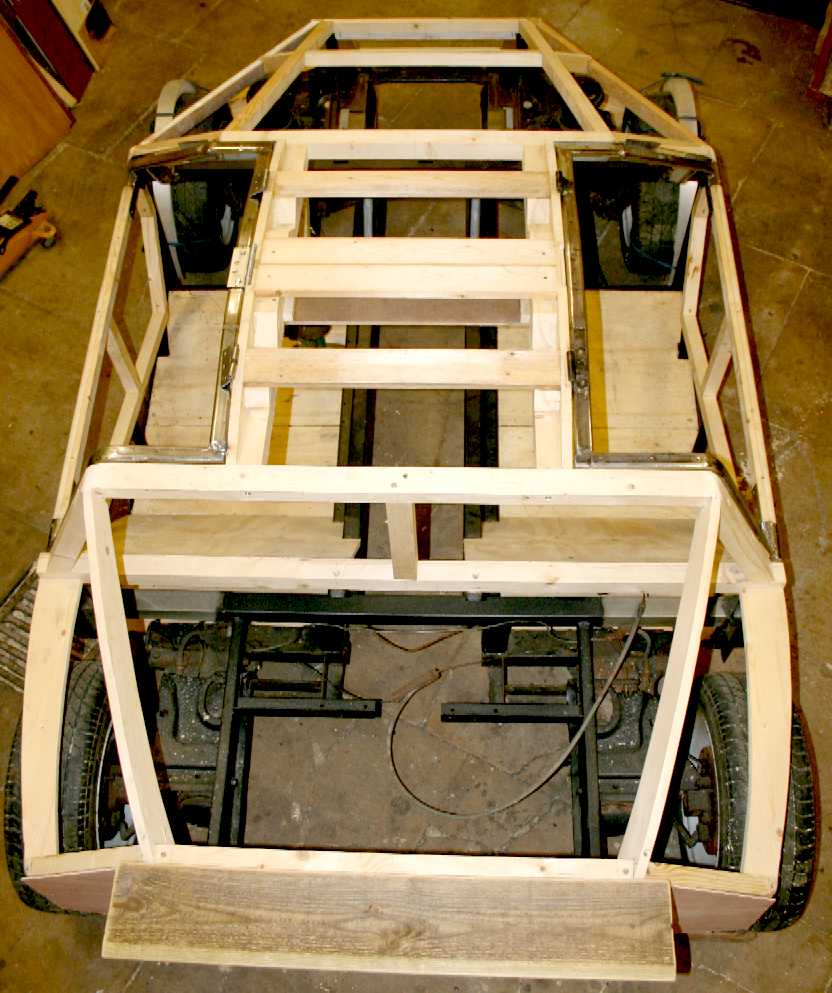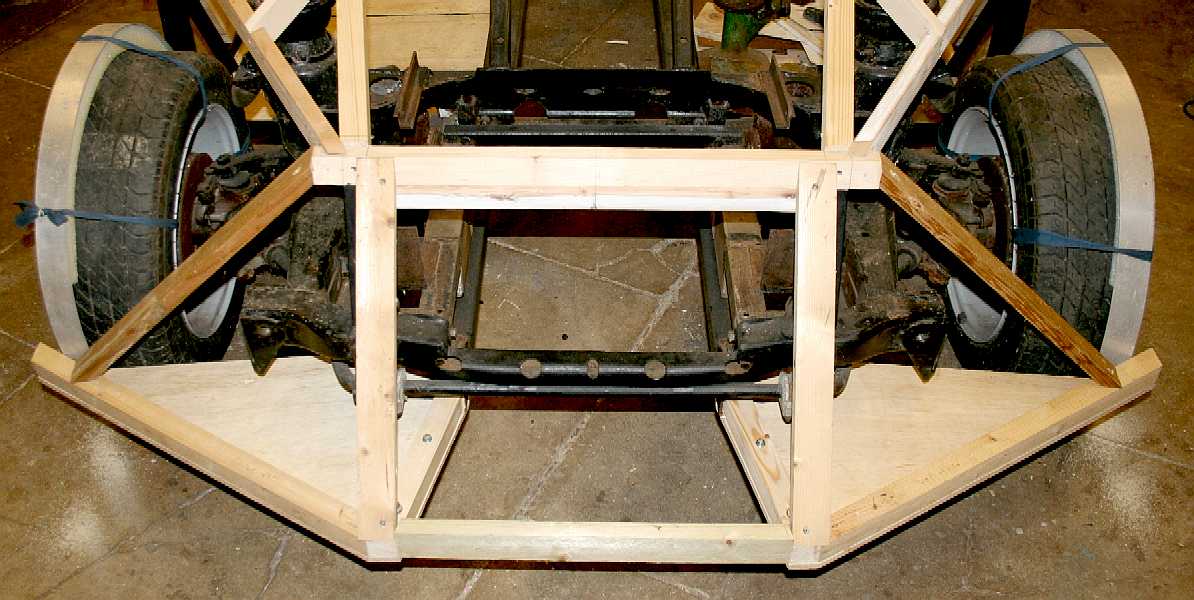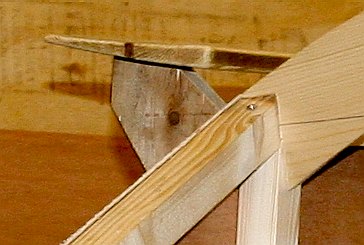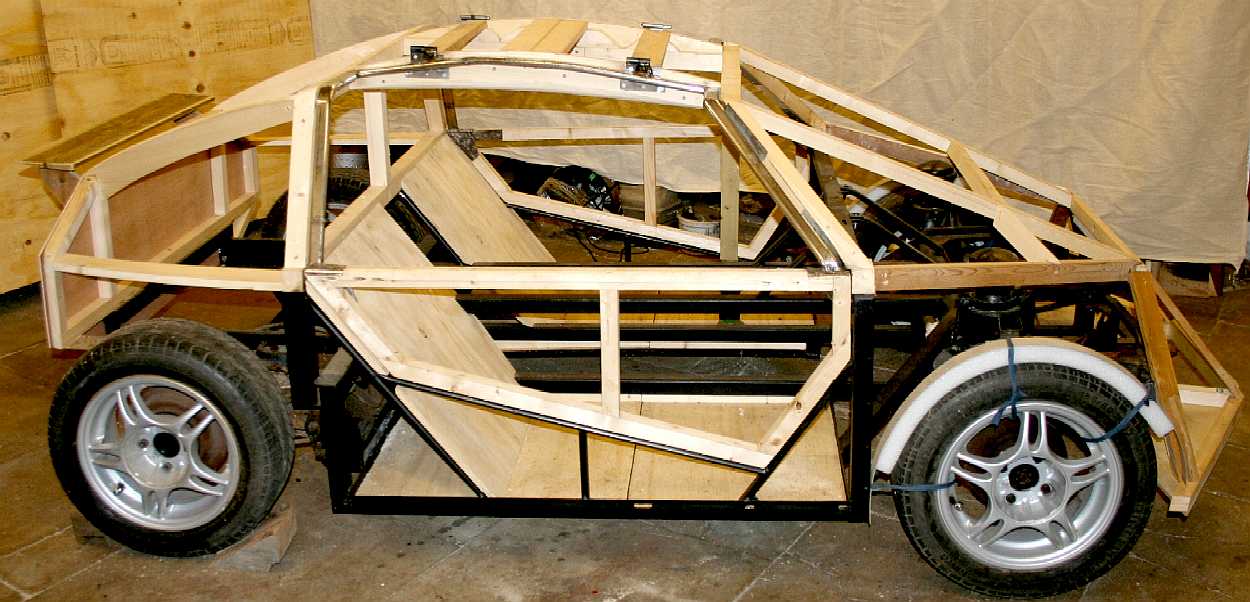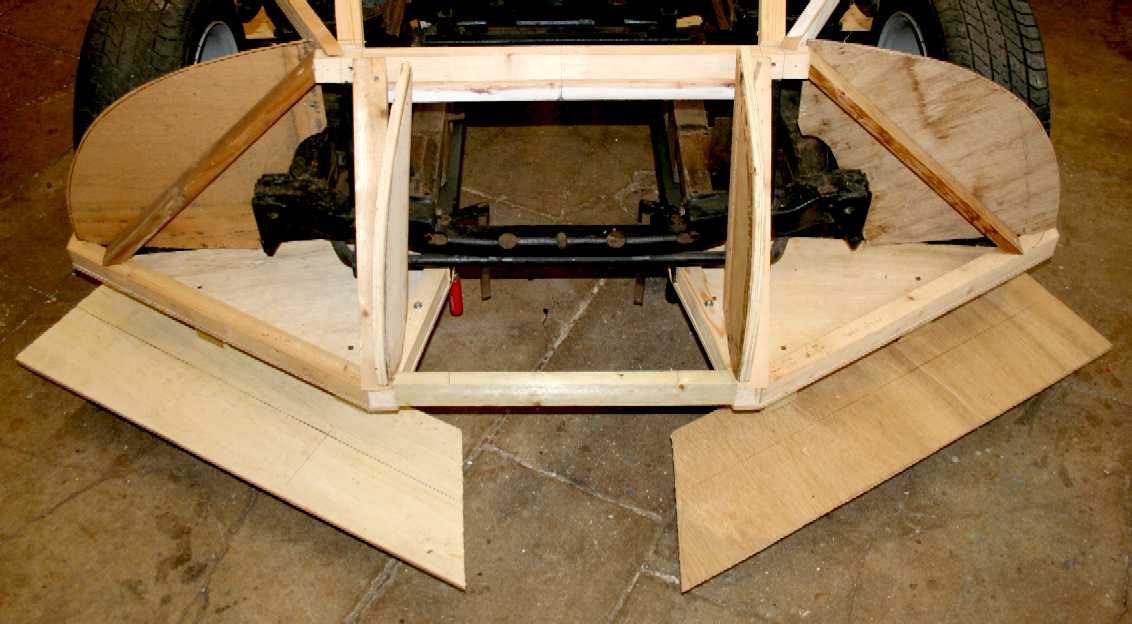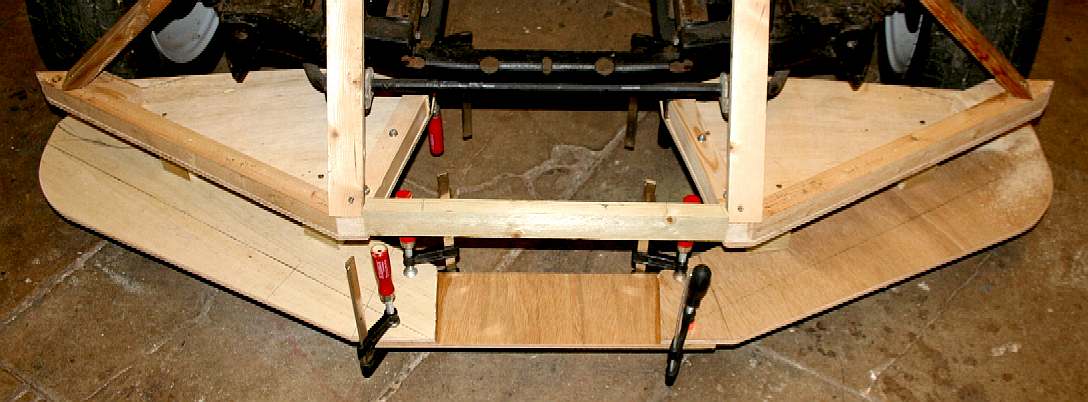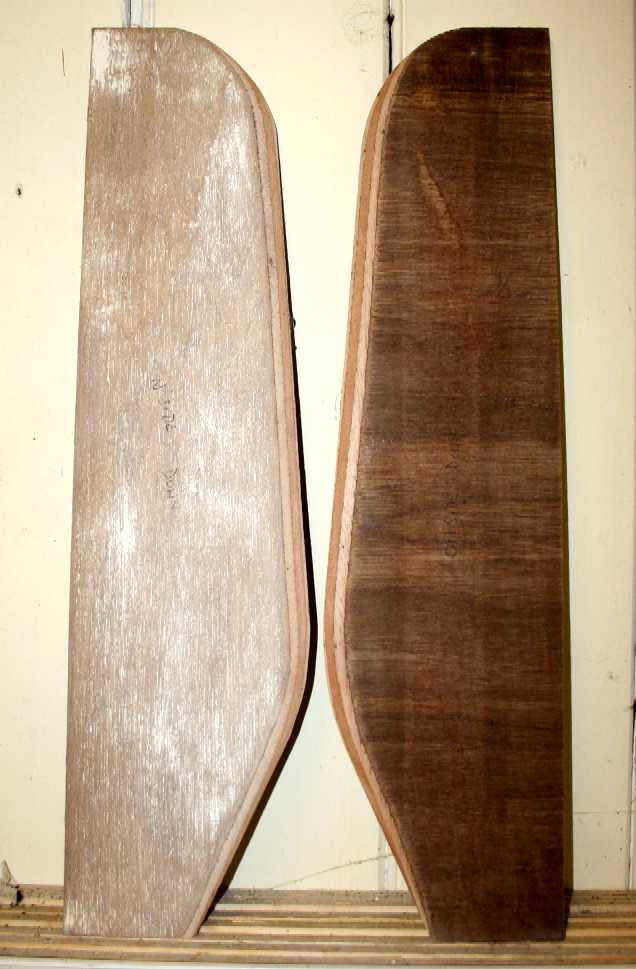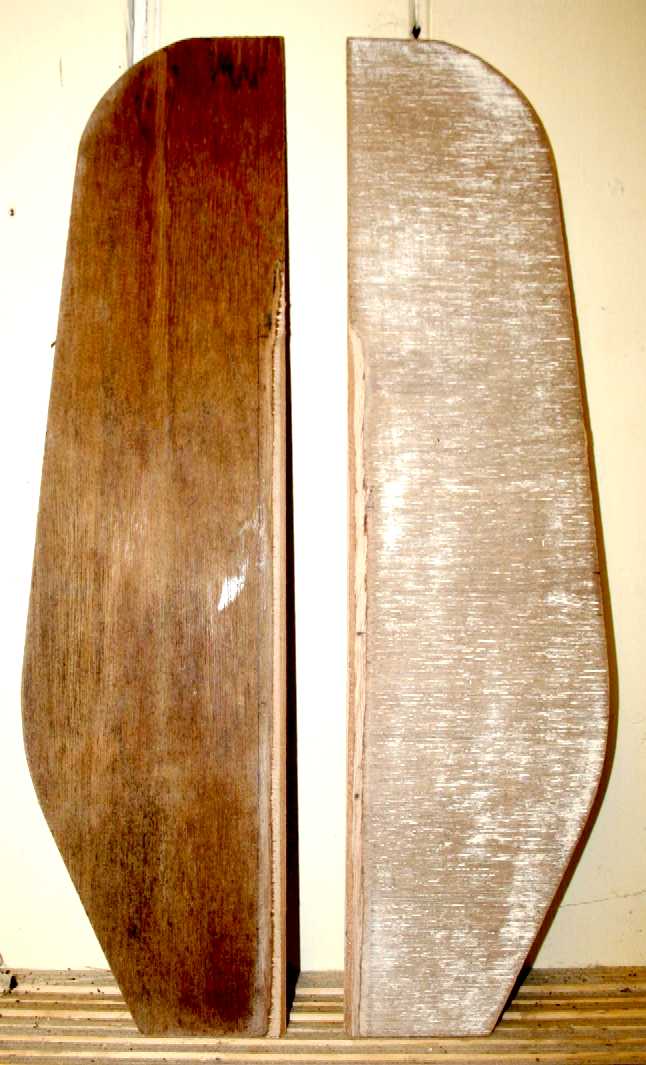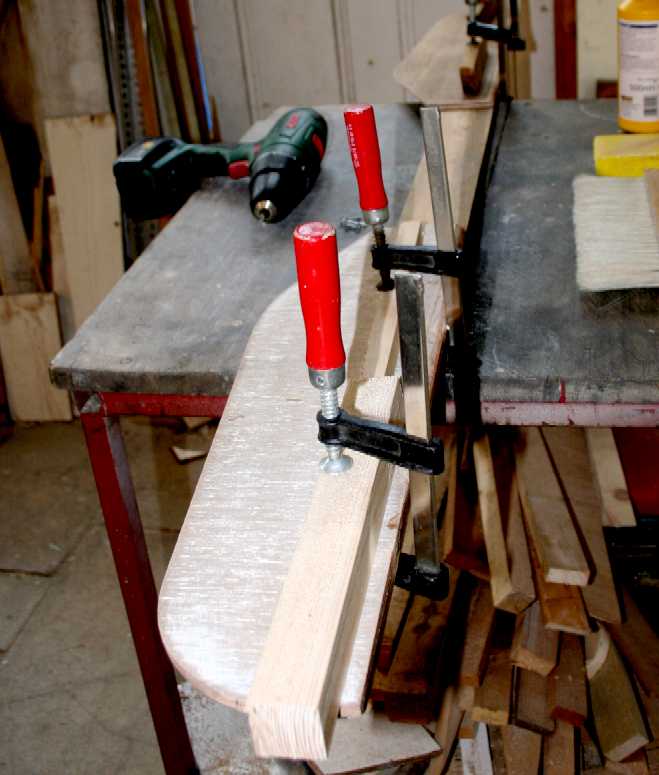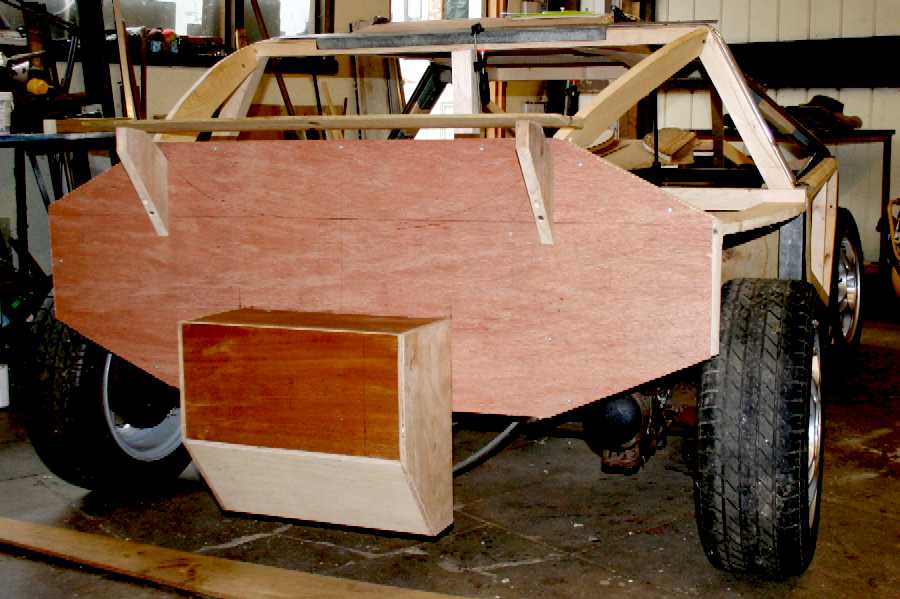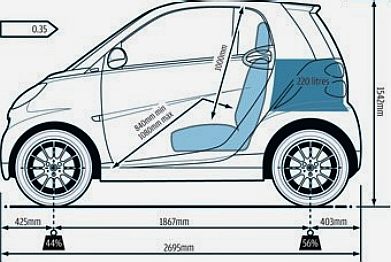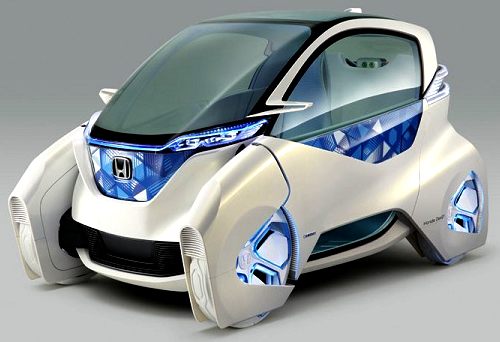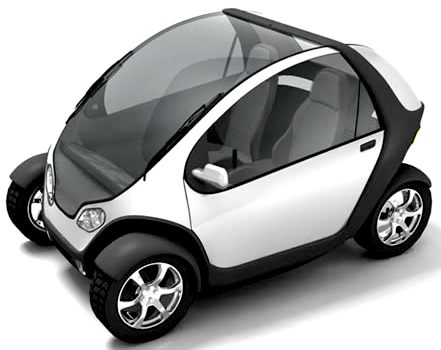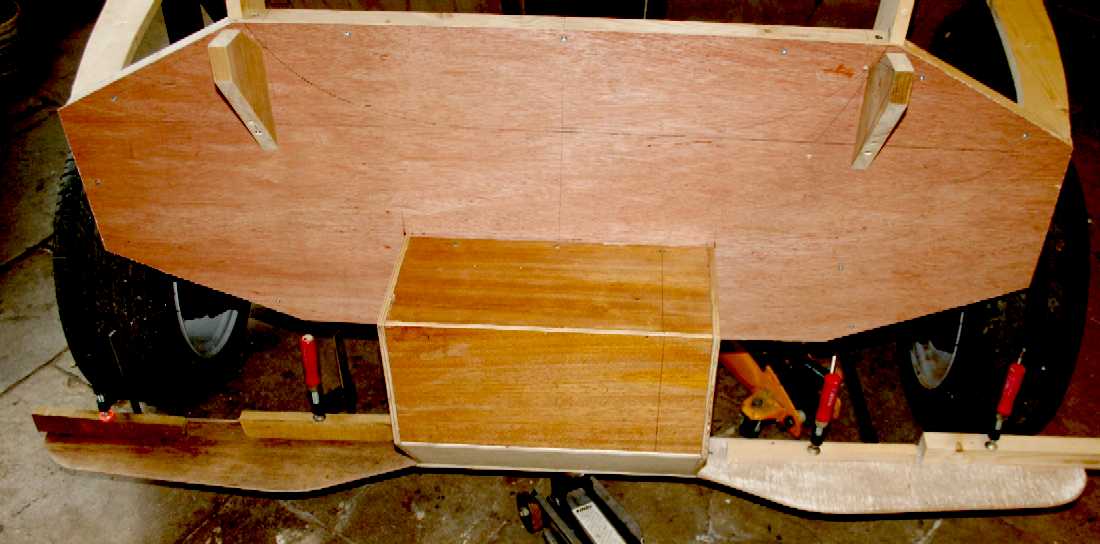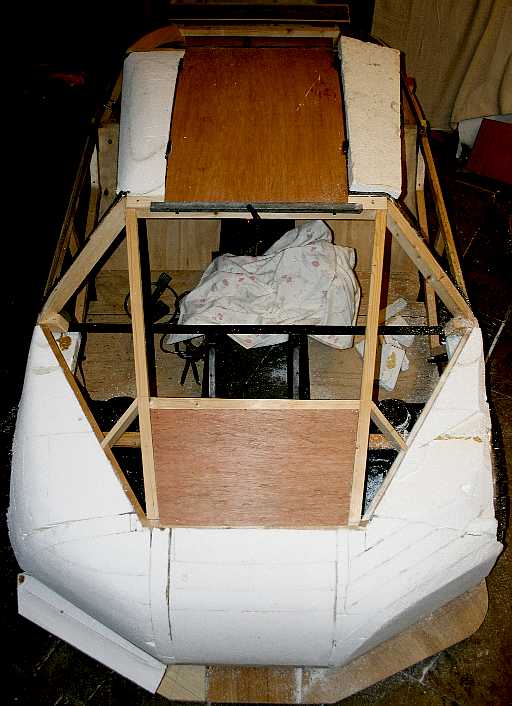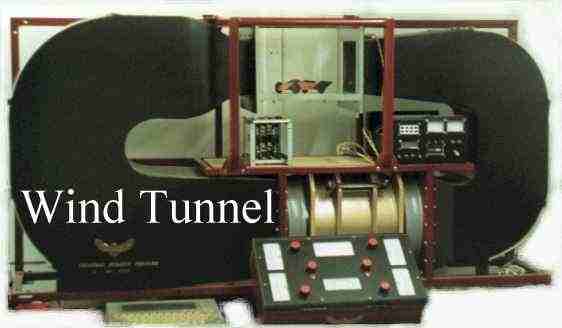|
ECOSTAR DC50 (BE4) - AERODYNAMICS
|
|||||||||||||||||||||||||||
|
The performance of a car is very much affected by the shape of its bodywork. With the advent of wind tunnels, the study of aerodynamics has advanced and now with computational fluid dynamics, predicting the drag of shapes is relatively easy. 'Drag' is the common name given to the force it takes to push a vehicle through the air - or, in other words, to overcome air resistance, measured in pounds or kilograms.
The physics is fairly simple based on fluid-flow and lamination. If a car has a lower frontal area, is starts off with an advantage over a bigger car that may do the same job (deliver passengers). Take a low frontal area and keep the drag down by using fine entry and exit points, and you will be on the right track. That is why supercars are always low and sleek looking.
The shape as seen from above is very Lamborghini, especially at the rear. Suitably curved formers will be affixed to the straight line timbers, onto which will be laid layers of foam that can be shaped ready for woven roving or carbon fibre and epoxy lay-up. The wheel arch will start out as a 200mm half-round arch (to replace the 50mm wide version shown here) that will be beaten into shape and fixed to the composite wings, or maybe even bonded to the wings at the mounding stage. Rivets are sure to play a part in the fixing process. August 6 2014.
What computers cannot replace (at the moment) is the spark of creation that leads to a particular body shape and style. It's a human thing. A computer would always come out with the same shape for a given payload - and that is one reason that production cars all look similar. Try telling a computer to be artistic or original. One day maybe.
In days gone by aerodynamics was not that well understood. Cars were voluptuous shapes with grand wheel arches and prominent radiators. Efficiency did not matter so much as image. These days efficiency is a high selling point, with petrol and road taxation laws finally steering development for the sake of sustainability.
Air, a gas, is far less dense that water, a liquid. Pushing water aside for a vessel to travel through takes a lot of energy. As the speed of a vehicle rises, air also becomes hard to force a solid shape through, and saps energy. The other force we need to worry about is rolling resistance (bearings and tyres). But more on that later.
In this picture you can see the basic angle of the nose from the timber formers, leading to the wheel arches. It's hard to say where the bonnet ends and the front wings begin. There will be a slightly raised centre section for the RoRo cartridge exchange system. We thought about having a moving panel, but as the clearance was almost there and moving parts add weight and complexity, a body mod was the favored option. All of this timber (buck) comes out once the moulding process is complete. There will be some steel supports welded in at high stress areas. The angle on the side timbers reminds us of John Cobb's Railton Mobil Special - the first wheel driven car to exceed 400mph in 1947 (394.19 mph average over two timed mile runs in opposite directions). We can't wait to see the curves. We think we know what John must have felt as his streamliner was being built for him. The only difference is that we are making the car ourselves. August 5 2014.
This is a mock up of the spoiler, which will be made in alloy and adjustable. Two additional side spoilers will work with the central wing to delay confused airflow as the car pushes its way through a smog laden atmosphere.
Here you can see the rear spoiler and the leading edge of the nose which will carry a skirt (not yet fitted) to train the air over the car. We need some airflow to enter the car for cooling and ventilation via what used to be a radiator grille in petrol powered cars. The Ecostar has no need for a radiator at 50Kw. But water cooling of higher output motors is sure to feature. Compare this design with the original Rover Metro. Why didn't Rover have such designs on the go? Is that why Rover is no more?
Blanks are made for the air dam, or ground level wing, which is also the scoop that channels and directs the air around the car, while reducing the vehicle forward compression wave from the interface boundary layer. The road stands still, the air is fluid and moving - and the vehicle is solid and also moving - but usually in a different direction to the air. The combination of these factors makes for some interesting situations - as any formula 1 team will tell you.
The blanks are shaped in rough, and joined with a centre piece that is only temporary, since the centre will most probably be a moveable section. We will be experimenting here, since we apply KISS principles - and would rather have fewer in the way of things that could possibly go wrong. She is though starting to take shape in the good-looks department. And that is one of the great things about building a car, the joy of seeing something come to life from your imagination. The final spoiler-dam will be in carbon fiber.
Turning now to the rear of the car, and once again plywood blanks are shaped in rough, somewhat resembling oars. These are bonded to a softwood yoke, making the whole a bit like a aircraft propeller in construction.
The rear of the car, highlighting the fanny-pack. In aerodynamic terms the tail is the exit (wound) as a vehicle passes through the air. As such it is possibly more important than the nose cone, or at least more difficult to arrange for a laminar exit.
A city car is shorter than other cars, hence a city sports car is an aerodynamicists nightmare. Traditional sports cars are much longer, so can afford longer tails. The DC50 design concept calls for us to keep the car park-able in cities. The Smart car below is slightly (300mm) shorter, but as streamlined as a brick. We have compromised between being ridiculously short and slipping through the air nicely. Some concept city cars actually fold in two, to reduce length for parking.
ABOVE LEFT - The Smart car is 2.695 meters bumper to bumper x 1.51m wide x 1.543m high, with a claimed CD of .35. The DC50 is just under 3.0m (9ft) with spoilers - so, just 300mm longer than a Smart car (including spoilers) and .50m shorter than a Suzuki Alto. The CD target of .25 should be easy to reach - but just to be sure, a rear spoiler is added to straighten out the disturbed air from under the car. ABOVE RIGHT - The Fiat Mio concept (bubble) car is very similar to the Smart car dimensionally. The front is potentially more streamlined due to a curvaceous screen blending into the wings and nose.
BELOW LEFT - the Honda Micro commuter car sacrifices gadget looks for higher drag, with its shrouded front wheels. BELOW RIGHT - The GM sponsored MIT city car has issues with un-faired wheels. In reality, this seems to have been engineered out as the folding concept developed.
Here you can see the DC50s rear wing temporarily positioned lower than it should be, but you get the idea. Wheel guards on either side will meet the wing. Thus, the working portion of the wing is only about half the width of the car. Better that than nothing.
We thought we'd include a picture of how the wooden formers are transformed into a smooth shape. The basic frame (at the head of this page) is filled in with foam blocks which are then carved by an experienced craftsman until the shape is as near perfect as possible by hand. This technique is fine for one off prototypes. If we were going into production, we'd laser scan one side, and mirror it for 100% balance - but where's the fun in that. The wing on the left of this picture (offside in the UK) is nearing final shape. The right wing (nearside in the UK) is still quite boxy. Same with the roof panels of the gullwing doors. The offside is shaped, the nearside has yet to be carved. Please note that these pictures are copyright © and you will need our permission to reproduce them.
ECOSTAR DC50 EV CONTROL SURFACES
WIND TUNNEL - The above is a desktop sized closed loop 5 element balance (to include lift and down-force measured via strain gauge bridges and amplifiers that you can buy off the shelf from Radio Spares), upright wind tunnel. It features rotating object table, triple insulated floating fan unit, variable wind velocity, boundary layer injection/vacuum, smoke trailing, temperature gauges and hours run meter. The analogue data from the instrument gauges, can be fed via A/D converters via as RS232 into a computer, to be interpreted by software.
ECOSTAR DC50 LINKS A-Z INDEX
EXTERNAL LINKS
http://www.smartplanet.com/blog/bulletin/toyotas-smart-insect-car-adapts-learns-and-says-hello/ http://www.plugincars.com/one-seat-12000-ev-commuter-car-europe-129009.html http://www.horizonhydrogeneenergie.com/ http://www.agnimotors.com/site/ Toyotas-smart-insect-car-adapts-learns-and-says-hello One-seat-12000-ev-commuter-car-europe
|
|||||||||||||||||||||||||||
|
This
website is Copyright © 2014 Bluebird Marine Systems Limited.
The names Bluebird,
Blueplanet BE3,
Ecostar DC50™, Utopia Tristar™
and the blue bird in flight
|
